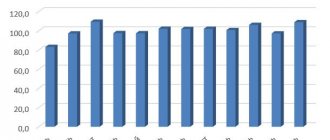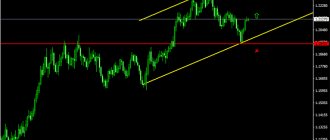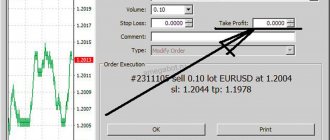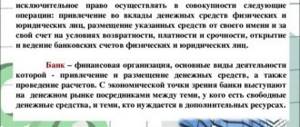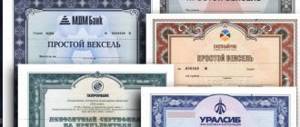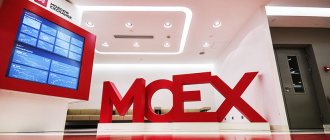— What is FORTS?
— This is a trading platform on the Moscow Stock Exchange!
— Are there technical indicators there?
— I mean, what do indicators have to do with it? This is not a trading terminal, but a trading platform, that is, a section of the MICEX where derivatives are traded!
- I don’t understand anything! What is MICEX and derivatives?
Something like this, not entirely intelligible dialogue, occurs when communicating with a practicing trader. With an investor who is just starting his career as a stock trader. Dear colleagues! To prevent you from getting into such a curious misunderstanding, I suggest you take a look at the Moscow Exchange market, FORTS!
Definition and Historical Origin of the FORTS Market
In order to fully understand what is here and what they eat with, let’s start with a little background. Initially, there were 3 trading and financial platforms in Russia. Moscow Stock Exchange , located, of course, in the capital of Russia. securities as shares , bonds and other securities of the country's leading issuers were in circulation .
The stock exchange located in St. Petersburg also conducted trading with the same list of exchange instruments. And, in fact, there, in the second capital of Russia, there existed the Russian Trading System - RTS. But in 2001, the RTS merged with the St. Petersburg Stock Exchange. The purpose of the merger was to organize the FORTS derivatives market.
In general, “FORTS” is not the name of the market, as such, but an abbreviation that consists of derivatives . The name of these derivative instruments constitutes this abbreviation – “Futures and Options of the Russian Trading System”. The organizer of the trades was RTS itself, and non-cash payments were carried out by the Closed Joint Stock Company (CJSC), RTS Clearing Center.
Now it's 2011. Representatives of the Moscow and St. Petersburg stock exchanges decide to reunite the Moscow Stock Exchange with the FORTS market. Then the FORTS market moves from St. Petersburg to Moscow. After which this association is renamed into Open Joint-Stock Company (OJSC), “Moscow Stock Exchange MICEX-RTS”.
Why is the FORTS market called “futures”
its name, the adjective “forward”, because of any urgent need. But according to a completely different interpretation of this root word. So, the basis of its adjective name is the word “deadline”, and not “urgency”, as some urgent matter. Moreover, many novice “artists” often confuse the FORTS market with the FOREX market. Apparently due to their similar pronunciations and Latin abbreviations...
The FORTS market is the derivatives section of the Moscow Stock Exchange. And it is called urgent due to the fact that such derivatives as futures and options are traded on this market: For oil (BR) and for gold (GOLD). For the euro/dollar rate (ED) and for the dollar/ruble rate (Si). For shares of Sberbank PJSC (SBRF) and for shares of Gazprom PJSC (GAZR). And also on such indices as Moscow Exchange (MIX) and RTS (RTS).
Derivatives on the forts market
But what do urgent instruments mean? The term “future-term” refers to contracts that have a limited circulation period . Contrary to the fact that you have the opportunity to familiarize yourself with the “futures” by clicking on the link of the same name. Still, let's briefly recall here where this derivative instrument comes from. In order to fully understand the further context.
The derivative instrument “futures” is called “derivative” because it is, as it were, reproduced from a future contract for the underlying asset. That is, when concluding a contract for the purchase/sale of shares/bonds, we mean a “futures” contract. When the expiration date of the futures arrives, it itself ceases its circulation on FORTS. At the same instant, the underlying asset is purchased (or sold). But the latter context applies exclusively to the “deliverable” type of futures. This is an important point that we will touch on below...
Let's consider an example of a futures contract for BRENT oil – BR-4.20, where “4.20” is the month and year of expiration. That is, in April 2020, this derivative will cease to exist in the FORTS derivatives section. Here, in the enlarged cells, we see that there are 12 days left until expiration. Based on the date of writing this publication, March 20, 2020. And in the futures specifications tab, we can see the specific date of the last day of circulation of this instrument - April 1, 2021.
Clearing calculation
To describe the settlement procedure in simple words, a temporary current account is opened for each participant in clearing operations. Funds are credited and debited from these accounts. After the transaction is completed, the temporary accounts are closed, and the total balance is transferred to the main account of each participant.
There are 2 methods of clearing settlements:
- classical. The clearing house determines the final balance for each settlement participant and transmits information to the Central Bank where the funds are in correspondent accounts. Only transit accounts with zero balances are opened at the Clearing House. This method is considered reliable, since the Central Bank provides the required amount of funds in the correspondent accounts of organizations;
- advance method. This method is more risky. Settlement is carried out by the clearing house. It functions like a bank: it displays the ending balance of participants’ accounts. Special guarantee funds have been created to compensate for the lack of funds in their accounts. Every day, generalized data on changes in balances on all accounts is transmitted to the Central Bank.
FORTS derivatives market participants
This is in contrast to the stock exchange where long-term investors make money on a buy and hold basis. FORTS market participants operate according to a slightly different trading strategy. Basically, speculators in the derivatives section try to take advantage of the high liquidity of instruments traded on FORTS. And their deals are not long-term. Because the term of derivative instruments itself is limited.
In general, we are simply forced to look at examples of trading on the FORTS market. Because only with a full understanding and detailed understanding of how derivatives trading takes place here. We will be able to fully understand what kind of market this is and why it is so attractive for relatively aggressive traders. Thus, all FORTS market participants can be divided into 3 categories.
It is the limited circulation period of financial instruments that is the main “trick” of the derivatives market.
Speculators
The derivatives section of the stock exchange, FORTS, can rightfully be considered one of the most highly liquid trading platforms. Therefore, the main goal of participants trading in this market is short-term profit. In other words, their profit depends on the difference in prices when buying/selling derivative instruments, namely on short-term positions. According to the classical principle; “buy cheaper and sell more expensive,” and vice versa; “sell more and buy back cheaper”!
That is, if we compare stock investors as an example to speculators in the FORTS derivatives section. Then it turns out that their strategies are fundamentally distinguished by their risky short-termism. Since it is the high degree of potential profitability of this market that is replaced by its increased level of risk. After all, derivatives here can be sold even before their expiration date ! This turns the instruments traded here for FORTS market participants into full-fledged “stock” assets.
An important feature of futures and some other derivatives is the ability to both buy and sell them. Thus, you can make money both on growth and on decline.
But not only scalpers, pip traders and high-frequency traders are regulars in the derivatives section of the FORTS market. Introduction is also relevant for this market. Because, again, it all depends on the current volatility of the instrument. Look, there are situations in the market when profits are obtained with high volatility. From a relatively long position, about 2 hours. Can be many times higher than the profit obtained with the same degree of volatility. But for a short-term deal.
It is this summary that implies the relevance of the introducer in the FORTS derivatives market! However, perhaps someone is not aware that it is necessary to take into account market clearing breaks. We will talk about them, and in particular about the operating mode of this market, a little below. In short, we can say that clearing on the derivatives market is a break for non-cash recalculation. Financial instruments of clients and provision of relevant services to them.
Writing materials on trading in text is very difficult. It is much easier to do them in video format. This is what we have been doing for more than 6 years! Subscribe to us and get the cream of information!
YouTube channel
Hedging in the derivatives market.
Hedging is a term that implies some kind of insurance. And in the investment interpretation, it is quite similar to “risk diversification”. That is, in contrast to the speculative method of trading on the FORTS derivatives section. Where derivative instruments are perceived by speculators as a “full-fledged stock instrument” in the sense of purchase/sale. Hedgers use futures and options as a way to minimize their risks when purchasing a commodity, currency or security.
For example, an investor expressed a desire to purchase shares of the public joint stock company (PJSC) Sberbank. But he wants to buy these securities not now, but, say, in 3 months. One of the reasons why he should do this now, and not in 3 months, is quite simple in understanding hedging. The fact is that the price at which these shares are traded now completely satisfies him.
An example of a hedge in the derivatives market.
Now, to understand what the “trick” of hedging is, let’s consider 2 options for the development of further events:
In the first case, suppose a FORTS market participant entered into a futures contract “SBRF-6.20” at a price of 18,990 rubles. Where the expiration date is June 2021. Let's assume that he entered into a futures contract to buy 10 shares, that is, 10 futures contracts. But with a futures price of 18,990 rubles, Sberbank shares now cost 190 rubles per share. So, upon reaching June 1, 2020, the hedger will be forced to:
A) Or, with the “deliverable” type of futures contract, purchase 10 shares of Sberbank at a price of 190 rubles per 1 share. With its real value as of June 1, 200 rubles per paper. Since, it was the delivery futures contract, at the time of its conclusion, that implied the purchase of shares at 190 rubles per security. In total, a hedger, if he buys 10 shares and immediately sells them, will make a profit of 100 rubles.
190 * 10 = 1 900 > 200 * 10 = 2 000 > 2 000 – 1 900 = 100
B) Or, with the “settled” type of futures contract. Just make a profit, with automatic fixation on June 1, 2021, in the amount of 1 ruble! Since it is with a settled futures contract that the position is assumed to be fixed on the expiration date of the futures. But if the hedger bought this futures at a price of 19,010, then his loss would be 1 ruble.
Profit; 189.9 * 10 = 1,899 > 190 * 10 = 1,900 > 1,900 – 1,899 = 1
Lesion; 190.1 * 10 = 1,901 > 190 * 10 = 1,900 > 1,900 – 1,901 = – 1
This example is given without taking into account any commissions. Since the purpose of these samples is solely to illustrate the trading mechanism on the FORTS market. Therefore, please do not criticize harshly! Also, here it is worth explaining to your readers that the futures price is always slightly different from the exchange rate value of the underlying asset. However, as the expiration date of the futures contract approaches, its price will gradually balance out to the price values of the underlying asset! This is an important point for understanding the following FORTS market participants...
This market “anomaly” is explained quite simply. The fact is that the price of shares is the price at which the underlying asset is traded at a given moment in time. While the futures for this underlying asset, that is, for this security (commodity, currency), is the predicted price. Simply put, the futures price is the price that traders “manipulate”, trying to make money on its difference.
And following these clarifications, a completely logical question arises: Why are futures, in the examples above, purchased at a price of 189.9 rubles? If their real cost in terminals is 18,990 rubles per contract? This is another feature of the FORTS derivatives market, which we will definitely touch on below.
Receive free signals on the stock market and futures. You don’t need to register anywhere, replenish your account – the same. Just subscribe to our pages and receive quality information quickly and with a guarantee.
Arbitrageurs in the FORTS market
In this version of trading on the FORTS derivatives section, there is arbitrage. If we describe this rather rarely used type of speculation, it will look like this: “Classic” arbitrage transactions are carried out on different markets. However, when using a financial instrument from the same issuer. But here you need to understand the following: This method of trading, such as arbitrage, implies not only a virtual absence of risk, but also the minimum possible profit.
Further, in order to at least to some extent clarify the methods of this method of manipulating FORTS instruments. I propose to briefly familiarize yourself with the terms that, to one degree or another, relate to derivative instruments. To the futures and options market of the Russian trading system. And to the arbitrage trading method as such:
Writing materials on trading in text is very difficult. It is much easier to do them in video format. This is what we have been doing for more than 6 years! Subscribe to us and get the cream of information!
YouTube channel
SPOT market
This is the very thing that is not a real market for financial instruments. This market differs from the FORTS derivatives section in that transactions here are concluded from an instant to 2 days. Another distinctive feature of this market is that assets are traded here for “cash” payments. Not in the understanding of cash payments as banknotes. And in the understanding that settlement of securities is supported by the right to property of shares of companies or obligations.
It is from this feature of the spot market that a completely logical conclusion follows. By the way, it is decisive for our context – arbitration! Namely, since this is the most “fair” market, this means that prices for financial assets here are the most current at the moment! In the context of the material we are considering, the spot market is the Moscow Stock Exchange.
Contango and backwardation
Contango – Contango is of Latin origin meaning “price premium.” This concept of this thesis assumes that the price of the underlying asset is below the current price of the derivative representing that underlying asset. Or: For example, the current futures price is higher than the market value of its guide, the underlying asset - stocks, bonds...
Backwardation - Backwardation , also from Latin origin, means “delay.” And this term implies that the current price of the futures contract is lower than the current value of the underlying asset. Or: The price level of the underlying security is higher than the current price of its derivative instrument - futures. Schematically it will look like this:
So, to carry out an arbitrage transaction, the arbitrator finds a situation in the FORTS forwards section that meets the contango conditions. Here, when it is detected, the trader sells the deliverable type of futures contract. At the same time, he acquires the underlying asset corresponding to this futures. Now, at the time of expiration of this futures contract, the arbitrageur sells this underlying instrument to the counterparty. Thus, the difference between the purchase price and the sale price, say, of a security, becomes the arbitrageur’s profit.
Example: We sell Sberbank deliverable futures at a price of 20,050 rubles. And we buy shares, of the same Sberbank, at their cost of 200 rubles per share. When the expiration date is reached, we are obliged to supply the counterparty, that is, the buyer, with a share of 200 rubles. So, with the mutual closure of our forward and spot positions, the income will be 0.5 rubles from one Sberbank paper.
Players
There are three categories involved in fort trading:
- Traders, also called speculators. Their goal is to profit from the difference in contract prices.
- Hedgers. These are people who simultaneously work in two markets - spot and derivatives. On the first, they enter into regular transactions, and on the second, they buy futures for insurance.
- Arbitrageurs. They also operate in several markets. Their goal is to find identical contracts that have different prices. This is what income is built on.
FORTS derivatives market instruments
In the above context, it was not for nothing that the transaction period of 2 days was mentioned. The fact is that in the FORTS derivatives market, futures contracts have a certain status. According to this status, contracts concluded in this section. They are urgent only if the contracts themselves were executed more than 2 days after the conclusion of the contract.
Otherwise, if the contract delay was less than 2 calendar days from the date of conclusion of the contract. Then, this transaction can be classified as a spot market, that is, this contract can be executed on the stock exchange. Among other things, the pricing of such contracts simply must be built (and are built) on the basis of the formation of underlying assets. Such underlying assets may include the following instruments:
- Third tier stocks, second tier stocks and blue chips;
- Ordinary bonds, repayable bonds and federal loan bonds (OFZ);
- Raw materials and industrial goods;
- Fossil and Energy Resources;
- Precious and semi-precious metals;
- National currency and currency pairs;
- Key interest rates of the country's central banks;
- Indices that include securities of leading issuers;
- MosPrime 3-month loan rates;
- And in some cases, weather and cryptocurrency forecasts.
To derivative financial instruments that are traded on the derivatives section of the Moscow Stock Exchange FORTS. Those included are those instruments that are not physically tangible valuable assets. That is, these derivatives are exclusively “settlement” contracts between market participants, which are expressed in monetary terms. And in the case of “deliverable” derivatives, they also entail some corresponding obligations. FORTS market derivatives include the following derivatives:
- Futures;
- Options;
- Forwards;
- Swaps.
How does it work
In the process of non-cash transactions, clearing is an important component:
- conclusion of a transaction;
- checking conditions and adjusting them if necessary;
- transaction confirmation;
- registration of participants;
- payment of commission income to intermediaries;
- determining who should transfer money, to whom, and how much;
- execution of all agreements through mutual settlement;
- transfer of information on transactions performed in one session;
- settlement of differences in mutual settlements.
FORTS market guarantee
Let's try to figure it out here. Why is it, for example, that a futures contract is purchased for 200 rubles, when its real value, displayed in the trading terminal, is 20,000 rubles. This “price” ratio is directly and completely related not only to warranty coverage. But also with “forced” leverage, which is a priori automated. Not in the sense of robotics, but in terms of the proportional ratio of the amount of the underlying asset to the futures contract.
The guarantee on the FORTS derivatives section is nothing more than insurance on the part of the Moscow Exchange joint-stock company itself. Thus, the guaranteed amount of collateral for any of the derivative instruments may be absolutely dynamic. In particular, it varies from 3 to 30 percent relative to the underlying asset. In the example below, we can see that the number of the underlying asset in one futures contract is equal to 100 units.
Thus, it turns out that with the market value of Sberbank shares at 200 rubles. And, at the same time, at the current market price (execution) of the futures contract of 20,000 rubles. We purchase 1 futures contract for a smaller amount that is a multiple of 100 units. However, when trading with futures, we also make a deposit.
That is, when buying/selling a futures contract, the broker charges the amount of the collateral from our trading account. It is equal to the corresponding instrument of this table, which you can operate when trading futures by clicking on the corresponding link: “Collateral”.
Working hours on the FORTS market
In general, the futures and options market is the leading trading platform for derivative financial instruments. And not only in Russia and in neighboring countries, but also in Eastern European countries. At this point in time, the derivatives section of the Moscow Stock Exchange FORTS is one of the longest. In terms of working hours. So, at any time, the schedule for the FORTS market can be viewed on the Moscow Exchange website: “Schedule for the FORTS market.”
Sections
Forts includes the following sections:
- stock;
- monetary;
- commodity.
Stock
This section gives traders access to transactions with securities of large corporations. Among them, enterprises of the industrial group often predominate. Derivatives of large indices are also used here.
Monetary
Offers traders transactions with currencies. This type of transaction is very popular among market participants. The most traded foreign currency pairs are the Russian ruble.
Commodity
This section presents various products. The most popular are precious metals and oil. These derivatives are characterized by high liquidity and volatility, i.e. their value can increase sharply at any time.

